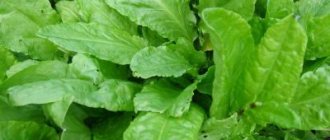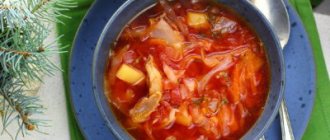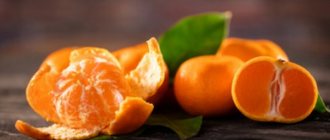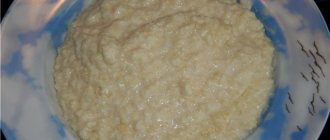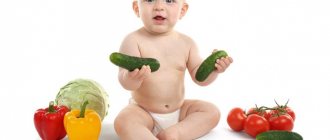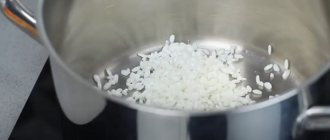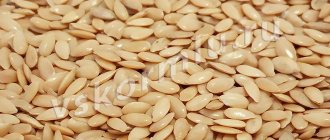Beetroot salad recipe for children
Good day, dear readers. In this article you will get acquainted with what beet salad for children is. Several recipes will be presented to your attention that will not only suit the little man, but will also benefit him, since they contain useful ingredients that have a beneficial effect on the growing body. Beetroot contains many minerals and vitamins that both children and adults need. This includes betaine (it actually gives beets their color), iodine, iron, magnesium, zinc, potassium, phosphorus, calcium, cobalt, valuable amino acids, carbohydrates, fiber, folic acid, B vitamins, PP, tocopherol and ascorbic acid.
With apple and carrots
The first recipe that we will consider in this article has three main components, namely: apple, carrots and beets.
This salad will be somewhat different from those discussed below, namely in that fresh vegetables are used for preparation. This salad is suitable for those children whose diet already includes them, in particular in raw form.
- one apple;
- one medium sized carrot;
- one not very large beet;
- two tbsp. spoons of sour cream.
- Before cooking, wash all vegetables thoroughly and remove dirt.
- Take an apple, cut it into two halves, cut out the core. Cut into small slices, as shown in the photo below.
- Take a carrot and cut off its peel.
- Grate or chop using a blender.
- Pour the chopped carrots into the chopped apples.
- Peel the beets, cut them into four pieces, and place them in a blender. We also chop (you can use a grater).
- Pour the chopped beets into the apples and carrots.
- Add sour cream. Mix everything well.
- If desired, you can add a small amount of sugar to this salad.
With nuts
My little gourmet liked the salad with beets and walnuts. My little son always asks for more.
- three to four small beets;
- one hundred and fifty grams of chopped walnuts;
- one hundred ml of sour cream;
- half a teaspoon of salt.
The salad prepared according to this recipe will be enough not only for the baby, but also for other family members to try.
- Boil the beets, peel them.
- Grate on a coarse grater.
- Pour into a bowl and add chopped nuts.
- Pour sour cream into the ingredients and add salt. Mix everything well.
- Salad ready.
Beet salad with apple
A salad prepared according to this recipe can be offered to babies starting from 11 months. By this age, the vast majority of children are already accustomed to the taste of an apple, and beets will add sweetness to the dish. The baby will be interested in trying something new.
Ingredients:
- beets – 1 pc.;
- apple – 1 pc.;
- vegetable oil or sour cream for dressing.
Small beets are boiled in their skins. This way it will retain more nutrients. Afterwards the vegetable is cooled, peeled and grated. After this, add the grated apple to the beets and mix. The salad can be seasoned with a teaspoon of vegetable oil or sour cream. But the fat content of sour cream should not exceed 20%, so as not to overload the stomach.
With prunes
To prepare we will need:
- about three hundred grams of boiled beets;
- one hundred grams of prunes;
- fifty grams of walnuts;
- salt to taste.
- Remove the skin from boiled beets.
- Cut into cubes.
- Grind the prunes.
- Pour it into the beets, add salt, and mix everything well.
- Finely chop or otherwise grind the nut. Add to the rest of the ingredients.
- If the salad turns out too dry, you can add vegetable oil, such as olive or sunflower.
Beetroot salad with prunes and nuts
If the child has learned to chew food well and chewing nuts is not a problem for him, you can prepare the following salad.
You need to prepare:
- beets – 1 pc.;
- prunes – 50 gr.;
- peeled walnuts – 50 gr.;
- low-fat cream.
Boil the beets. Wash dried fruits, pour hot water for half an hour, cut into strips, remove seeds. Grate the beets on a coarse grater. Chop the nuts with a knife and combine all ingredients. Top with cream.
The vinaigrette
The described amount of ingredients will be sufficient to prepare a salad not only for the child, but also for his mother.
- three small beets;
- three medium potatoes;
- three medium carrots or six to seven small ones;
- two small canned cucumbers;
- about one hundred grams of canned peas;
- salt to taste;
- vegetable oil for lubrication;
- bunch of dill.
- Wash the vegetables thoroughly. Place them on a baking sheet. First cut the beets into halves.
- Cover the vegetables with foil and place in the oven preheated to 180 degrees. The baking process for carrots takes 20-25 minutes, beets and potatoes - 45 minutes.
- While the vegetables are baking, cut the canned cucumber into cubes. But only if this product is in the child’s diet. If the baby is still too small and does not eat canned vegetables, you should abandon this component.
- Finely chop the dill.
- When the vegetables are cooked and have time to cool, cut off their peels. Cut carrots into cubes.
- Grind potatoes in the same way.
- We also chop the beets.
- Pour all the ingredients into one container. Add green peas (only if the little one is already familiar with this product and it is suitable for his age), salt, and vegetable oil. Mix everything well.
- The baby's beet salad is ready. Bon appetit.
Now you know how to make beetroot salad for children. You were given several cooking options. In fact, there can be much more of them, everything is in your hands. Experiment with ingredients, add new components, delight your little gourmet!
What should you be wary of?
Despite the huge number of positive qualities, beets have some features that mothers should take into account. For example, not everyone knows that this root vegetable slightly lowers blood pressure. In most cases, this effect on the body is beneficial, but young children do not need to lower blood pressure. The fact is that a baby’s normal blood pressure is slightly lower than that of a healthy adult.
Due to its laxative properties, this root vegetable in the form of complementary foods can cause diarrhea in infants. In addition, due to its bright color, the dark red vegetable can cause allergies.
Beets, like other root vegetables, during ripening absorb harmful and dangerous substances that fall into the ground. The red vegetable may contain nitrates, nitrites, ammonium salts and amides. All this has an extremely negative impact on the functioning of internal organs. It is better not to buy root vegetables for babies in the store, but to use those that have grown in your own garden. If you are not sure that they were grown in an ecologically clean area, it makes sense to try to reduce the saturation of vegetables with nitrates:
- After boiling, it is better to immediately drain the water, since harmful substances remain in it;
- a large number of veins may indicate the presence of nitrates;
- It is better to cut off the tail and top of the whole boiled fruit - this is where the highest concentration of hazardous substances is observed;
- Before stewing, it is advisable to cut the vegetable into pieces and soak in cold water;
- It is better to give beet puree to your child right away; over time, nitrates become even more toxic.
Age and feeding method
It is advisable that the baby is already familiar with potatoes, carrots, cabbage and zucchini. To avoid mistakes, you should feed your son or daughter according to the recommendations of pediatricians:
- First, it is advisable to try giving your child a very small portion of puree - on the tip of a teaspoon. Assess his stool, skin condition and mood. If the baby feels well - his cheeks do not turn red, there is no diarrhea, you can continue to feed him vegetable puree.
There is no need to prepare a large portion of puree at once, because it is gradually introduced into the child’s diet.
- Like other new dishes, it is better to offer beet puree to your baby in the first half of the day.
- If your son or daughter has a good reaction to this vegetable, you shouldn’t give it a lot so as not to cause diarrhea. You need to start with half a teaspoon, and eventually increase to 1-2 tablespoons.
- Don't be alarmed if your baby's stool turns dark burgundy. Your urine may also turn red. Information about this phenomenon is on Dr. Komarovsky’s website. Doctors do not have a general opinion on how normal this reaction of the body to complementary foods is, but it is certainly typical.
How to make easy beet soup with cheese
This soup will be a good alternative to the usual chicken noodles or meatball soup for children over 2 years old.
Ingredients
Step-by-step preparation of soup for children
This soup can be served with cream or sour cream and croutons. It will be appreciated not only by children, but also by adults.
The recipe for this dish can be varied and changed as desired. For example, if you are against frying and don’t like grated vegetables in first courses, you can cut the beets and immediately put them in the broth, but you will need more cooking time, since they are raw.
Potatoes can be added no earlier than after 30 - 40 minutes. And instead of cheese, you can add a chopped egg to this soup, if the baby is not allergic to it, at the rate of a quarter for each plate. You can decorate the soup with finely chopped herbs.
Selecting and preparing beets correctly
It is very important to choose the right beets as complementary foods for a child (for more details, see the article: How is complementary feeding done for a 7-month-old breastfed baby?). It is worth making sure that the vegetables have the correct shape and are free of damage and spoiled parts. Any variety will do - you can buy cylindrical or classic rounded beets. If the root vegetable will be boiled, it is advisable to choose medium-sized vegetables so that you do not have to cook them for a long time.
It is convenient to cook vegetables by steaming, boiling in water, stewing or baking. It is believed that steaming helps to get rid of harmful and dangerous substances. If you are planning a stew, the vegetables should be peeled immediately and cut into small pieces.
The most convenient and efficient way to steam beets is to steam them.
How long to cook beets? As a rule, a medium-sized fruit takes from 40 minutes to an hour to cook. After it becomes soft, it needs to be cooled and cleaned, then crushed into a homogeneous mass using a blender or fine grater. There is no need to add water, this root vegetable is quite juicy. If you choose high-quality vegetables and prepare them correctly, the puree will turn out sweet, and your baby will be happy to try a new dish for him. The most successful option for introducing beets into the menu is mixing it with other vegetables. You can also freeze the finished food and offer it to your child another time.
Beet juice
Some pediatricians recommend introducing beet juice into children's diets. This product is useful for those children who suffer from constipation, but it must be prepared and given with caution. The fact is that such juice increases the acidity of the stomach. In addition, it will certainly cause relaxation of the stool. During defecation, fluid is removed from the body, and with it a lot of useful substances and minerals. It is very important to give such an amount of juice so as not to cause persistent stool upset in the baby. At what age should you give your baby beet juice? Pediatricians recommend age no earlier than one year to avoid possible allergies. Rules for making juice:
- First, wash the root vegetable well and scald it with boiling water. Then peel and grate, squeeze out the juice using gauze or a strainer.
- Let the juice sit for 2 hours, then fewer harmful substances will enter the baby’s body.
- The juice should be diluted with boiled water in a ratio of 1:4 or even 1:5.
- It’s even better to dilute beet juice with apple and carrot juice.
- First, you need to give the child a couple of drops of juice, increasing the dose day by day (for more details, see the article: preparing the diet of a 2-year-old child for every day). You should not give your baby more than 2 teaspoons of beet juice.
Useful and harmful properties
The red root vegetable contains a lot of fiber, having a pronounced laxative effect. Its use quickly relieves constipation. Beet pulp and juice contain organic acids, iron, potassium, magnesium, iodine, B vitamins, and ascorbic acid. This vegetable stimulates the liver and protects it from the effects of toxins.
Beets normalize the functions of the endocrine system, maintain high levels of hemoglobin, strengthen vascular walls and improve immunity, bind dangerous metabolites and remove them from the body.
Regular consumption of beets helps to establish a restful night's sleep, reduces nervous excitability, and accelerates overall growth.
The root vegetable contains several times more sugar than other vegetables. For this reason, it should not be eaten if you have carbohydrate metabolism disorders or diabetes. Beets are contraindicated for children suffering from frequent stool disorders, inflammatory diseases of the stomach, intestines and kidneys.
Intolerance to this fruit is rare. But children prone to food allergies are likely to have a negative reaction. Possible manifestations: red spots on the skin, rash, lacrimation, swelling of the mucous membranes, colic. Signs may appear within 2–24 hours after consumption.
Dishes for children made from beets
Over time, simple beet puree for your baby will become a familiar dish and may become boring. Sometimes a child refuses to eat this vegetable, then it makes sense to try to prepare new dishes from it. However, you should first make sure that your son or daughter is not allergic to the root vegetable. A one-year-old child can appreciate beetroot soup, salad and even red borscht.
Beet salad
The beets need to be boiled in water or steamed until tender. Then cool, peel and grate. Season the salad with salt, chopped herbs and vegetable oil. Instead of butter, it is good to use unsweetened yogurt. If the child is 1.5 years old, the salad can be seasoned with sour cream. Chopped walnuts and steamed prunes are also added to it if the child is already familiar with these products.
Children's beetroot
Preparing baby beetroot soup is easy; the recipe only contains a few ingredients.
- First you need to boil 1 beet and 1 potato tuber until tender. Vegetables should be cooked separately.
- Cool and grind. Cut the potatoes into cubes and grate the boiled beets.
- Bring 0.5 liters of water to a boil and add chopped vegetables into the pan and boil again.
- Add chopped eggs (or just yolks), dill, and salt to beet soup for taste. You can add a spoonful of sour cream to a plate with beetroot if the baby is already 1.5 years old.
Diet borscht
This dish should be prepared differently from how it is prepared for adults - tomato paste is not added to it and vegetables are not pre-fried. You will need one beet, 100 g of cabbage, 1 potato tuber, half a carrot and an onion. Boil the beets first, take the remaining vegetables raw. Add grated beets and carrots, chopped cabbage, potatoes and onions to boiling water. Add half a teaspoon of vegetable oil. Cook until the vegetables are ready.
At what age can you offer your baby borscht and beetroot soup? If you cook them in water and not in broth - from 10-11 months. In this case, it is allowed to add chopped meat to the finished soup or borscht. Over time, you can use sour cream - decorate the finished beetroot soup with it, or season the salad.
As you can see, beets may well become a child’s favorite dish. It is important to start introducing it according to the rules and carefully monitor the baby’s reaction. A little later, from about 2 years old, this vegetable can be successfully used to prepare vinaigrette, beet cutlets, and salads. It is good to combine with cottage cheese, stuffed fish and as a base for meat borscht. In the meantime, you just need to gradually accustom your baby to beet puree, so that over time he will fall in love with this healthy and tasty vegetable.
Beetroot for children: recipes
Thanks to its sweet taste and juiciness, the root vegetable can be combined with most types of vegetables, some fruits, porridges made from buckwheat, rice, and corn. It is recommended to prepare a variety of dishes for children from beets: soups, side dishes for meat, casseroles, salads, stews, desserts.
Boiled or raw fruit juice can be given mixed with apple, cucumber or carrot juice as a vitamin drink.
Boiled beets for children
You can cook it in a double boiler, slow cooker or regular saucepan with a lid. The fruits are pre-washed with a brush, thoroughly removing dirt. The tops and tails are cut off. It is healthier to cook beets whole in their skins. This way she loses less juice and vitamins. No salt or sugar is added.
The vegetables are poured with water, brought to a boil and simmered over low heat under the lid for about 1 hour. Check readiness with a knife blade or fork.
Cool the beets in a bowl with cold water for 15–20 minutes, then peel them. For baby puree, you can grind it in a blender, adding a little vegetable oil or cream.
Beet salad for children
For preparation you will need:
- boiled beets - 100 g;
- large apple - 100 g;
- prunes - 2 pcs.;
- raisins - 1 tbsp. l;
- yogurt - 2 tbsp. l.
Pour boiling water over dried fruits for 15 minutes to swell. Chop the beets and mix with grated apple. Finely chop the soaked prunes, add to the mixture, and add the prepared raisins. Season the dish with yogurt.
Children's menu. Beetroot dishes for children
Any vegetables that can be stored for a long time, like pumpkin or zucchini, are popular in our latitudes, since we certainly know that they are not imported and grew up here. Beets are no exception - dishes made from them are not only healthy and nutritious, but also diversify the diet of children and adults well. From our article you will learn how tasty and simple it is to prepare this root vegetable for both the little ones and older children.
Previously, pediatricians recommended introducing fresh beet juice into complementary foods from literally 6 months. Today it is unanimously recognized as an extremely aggressive product, which, despite all its usefulness, can be introduced into the diet after a year, and even then only as an additive to apple or carrot juice in a ratio of 1:10.
But besides beet juice, you can make many other interesting dishes, the main advantage of which is the ability to give them to children from 8 months. As you must have guessed, the main condition for facilitating the absorption of this product by a child is heat treatment. In any of all the dishes we prepare, beets must be boiled or fried.
As a rule, it is boiled in the peel - this allows you to preserve the maximum of useful substances, and the taste of the root vegetable becomes brighter and richer. It is from such beets, boiled in their jackets, that several salad options can be prepared for children from 8 months of age.
Beet salad with apple
Take 50 g of cooked and peeled vegetable, grate it on a fine grater, add a finely grated fresh apple to it, and season with a teaspoon of vegetable oil if desired.
Your baby will eat this salad with great pleasure, since the usual taste of apple is complemented by the interesting and sweet, but mild taste of beets.
How to give to a child
Young mothers often wonder at what age to add a new vegetable product to their child’s diet.
When to include in the diet
Previously, freshly squeezed juice was introduced into baby's complementary foods from the age of six months. Now pediatricians, including Dr. Komarovsky, have come to the conclusion that this product is too aggressive for the stomach of infants. Therefore, it is recommended to feed dishes made from boiled beets starting from 1 year.
Beetroot juice can be given in combination with apple or carrot juice (in a ratio of 1:10) no earlier than when the baby turns 1 year old.
Rules for entering the menu
General rules for adding healthy root vegetables to your diet:
- The serving volume at the very beginning is 0.5 tsp. in a day.
- To observe the child’s reaction to the supplement throughout the day, at first you need to give beets only in the morning.
- It is necessary to carefully monitor signs of allergies and intolerance to the product. If any appear (loose stools, abdominal pain), then the source of the problem should be temporarily excluded from the diet. You can give the product to your child a second time only after 1-2 months.
- With normal digestibility of the new vegetable by the body, the portion is increased by half a teaspoon. You need to increase it to five teaspoons per day.
- At the initial stage, you can give your baby beets 1-2 times a week.
- When the child is one year old, it is allowed to offer more beet-based dishes. A daily serving of vegetables for a child up to three years of age is 50 g.
- From four to seven years of age, the volume of prepared root vegetables on the menu can be increased to 100 g per day.
Beets are given to children under one year of age only after heat treatment.
Contraindications
Like any new product, beets should be added to an infant's diet carefully. Sometimes the dosage should be less than normal, and in special cases the root vegetable is completely prohibited.
Beets are contraindicated:
- if you are allergic to the product;
- if you have digestive diseases;
- for inflammation of the genitourinary system;
- for kidney pathologies.
Cooking correctly
In order for the root vegetable to be beneficial and not harm the body, it must be prepared correctly:
- Beets are usually boiled in their skins so that the product does not lose its beneficial substances.
- Before cooking, the root vegetable must be washed.
- Mothers are unhappy that cooking takes a long time. Professional chefs have their own secret - after 30 minutes of cooking a vegetable, it must be removed from the stove and placed in a pan in cold water. After 10 minutes you can remove the peel.
- Boiled beets are used in the preparation of many nutritious dishes for children from 8 months.
The beets are cooked for 40 minutes to 1.5 hours. Taking contrasting temperatures will help speed up the process. Immerse the vegetable in ice water for 10 minutes immediately after boiling.
